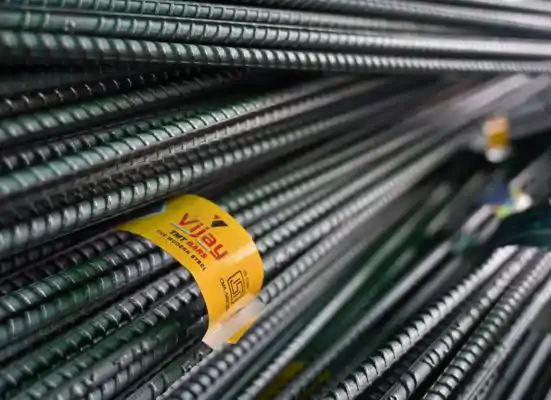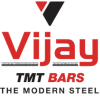
The Secret to Modern Construction: Why Steel Matters
Steel is celebrated for its outstanding mechanical properties, notably its high tensile strength, ductility, and resilience under intense stresses.Admin
1. Introduction: The Importance of Steel in Modern Construction
India’s infrastructure boom, urban expansion, and governmental housing initiatives underscore the need for reliable, high-performance construction materials. Among these, steel plays an indispensable role, serving as a backbone to everything from residential buildings to bridges, highways, and commercial complexes. The adoption of advanced steel products, particularly Thermo-Mechanically Treated (TMT) bars, has transformed construction practices by enhancing safety, durability, and sustainability.
This research-focused blog aims to deepen awareness surrounding TMT steel and other essential iron and steel products, empowering stakeholders like builders, architects, engineers, and homeowners in order to make informed decisions that ensure safer, longer-lasting structures while fostering a knowledgeable industry community.
2. Steel’s Unique Properties and Its Application in Construction
Steel is celebrated for its outstanding mechanical properties, notably its high tensile strength, ductility, and resilience under intense stresses. Unlike concrete, which resists compression but weakens under tension, steel’s flexibility allows it to accommodate dynamic forces such as earthquakes, wind loads, and thermal expansion.
The perfect synergy between steel and concrete in reinforced concrete construction optimizes the strengths of both materials. Reinforcement steels, particularly TMT bars, contribute crucial tensile strength while maintaining adaptability. Steel’s versatility enables it to be shaped, welded, and treated to meet diverse structural requirements, making it irreplaceable in modern construction.
3. Overview of TMT Steel Bars and Their Manufacturing Technique
TMT bars have become the preferred reinforcement material across India due to their favorable performance traits. The manufacturing process involves:
- Thermo-Mechanical Treatment: Steel rods are heated to a high temperature and rapidly quenched. This creates a hardened outer surface (martensitic layer) that improves resistance to wear, corrosion, and heat.
- Ductile Inner Core: The rapid cooling forms a flexible core that can bend and absorb shocks without breaking, an attribute essential for earthquake-resistant construction zones.
- Ribbed Surface: Outer ribs are created during manufacturing to increase bonding with concrete, preventing slippage and reinforcing overall structural cohesion.
The Fe-500 and Fe-600 grades of TMT bars have become the market standard, meeting Indian Bureau of Standards’ (BIS) stringent IS 1786 requirements for tensile, ductility, and yield strength.
4. Market Dynamics of TMT and Steel Products in India
India’s construction steel market is expanding rapidly, supported by:
- Urban Migration: Increasing urban population creates immense demand for affordable and durable housing.
- Government Infrastructure Programs: Projects like Bharatmala (roads), Sagarmala (ports), and Smart Cities require vast quantities of quality steel for timely, safe completion.
- Private Sector Growth: Industrial developments, commercial complexes, and residential projects add to steel consumption.
The TMT segment, valued in billions of dollars, is expected to grow at around 9% CAGR through 2032. This growth necessitates robust, scalable production facilities, efficient logistics, and strict quality oversight. Key industry players include SAIL, Tata Steel, JSW Steel, and regional producers like Vijay TMT, all competing to supply reliable steel solutions tailored for Indian needs.
5. Economic Factors Influencing the Steel Sector
TMT and steel prices are influenced by:
- Raw Material Costs: Prices of iron ore, metallurgical coal, and scrap steel impact production expenses.
- Energy Prices: Steelmaking is energy-intensive, so fluctuations in electricity and fuel costs play a pivotal role.
- Regulatory Policies: Import duties, taxes, and government support schemes shape pricing and availability.
- Market Demand and Supply: Construction booms or slowdowns directly affect steel consumption and price volatility.
6. Standards and Regulations in India’s Steel Industry
India’s Bureau of Indian Standards (BIS) regulates steel quality under IS 1786 standards that govern mechanical and chemical properties of TMT bars. Strict adherence ensures that steel meets:
- Minimum tensile strength and elongation
- Corrosion resistance levels suitable for Indian coastal and industrial environments
- Fire endurance capabilities matching safety codes
Third-party certifications and inspections form an essential part of quality assurance, preventing sub-standard steel from entering the market. Manufacturers continue investing in modern electric-arc furnace technology and captive iron pellet facilities to maintain consistent quality and environmental compliance.
7. Environmental and Sustainability Considerations in Steel Production
With rising awareness of environmental impacts, the steel industry in India is integrating green practices such as:
- Shift to electric arc furnace (EAF) steelmaking, reducing CO2 emissions compared to traditional blast furnaces.
- Recycling scrap steel to conserve resources and energy.
- Introducing energy efficiency and waste management programs within plants.
Sustainable steel production supports broader government goals on carbon footprint reduction while ensuring that the construction industry can continue growing responsibly.
8. Awareness and Industry Challenges: Building Knowledge for Safer Structures
While the importance of TMT steel is generally acknowledged in the industry, gaps remain in awareness among smaller builders and homeowners regarding product grades, certification authenticity, and proper handling. Challenges include:
- Proliferation of counterfeit or substandard steel in some markets, risking structural safety.
- Lack of knowledge about choosing the right steel grade for different construction needs.
Variability in construction practices leading to underutilization of steel properties.
Raising awareness through research blogs, training workshops, and strict enforcement of standards is essential to mitigate risks and elevate construction quality nationwide.
9. Conclusion: The Future of Steel in India and Promoting Informed Choices
TMT and iron & steel products are foundational to India’s infrastructure ambitions. Advancements in manufacturing, growing market demand, and strengthened regulatory frameworks create a promising outlook for a safer, more resilient built environment.
Equipping industry players and consumers with knowledge about steel types, certifications, pricing trends, and sustainability will foster smarter decision-making. Ultimately, transparent supply chains and high-quality steel products like those from Vijay TMT embody the pathway toward building India’s safe, sustainable future.
